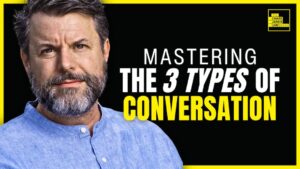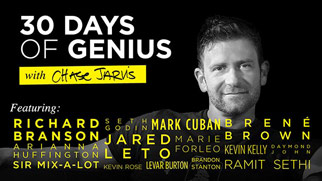There’s no question that we live in unprecedented times. Even for those of us who haven’t been around for a full lifetime yet; things feel different than they did 10 years ago. While we might scoff at our parents for blaming it on phones, the reality is that technology is a huge part of the problem. The way we connect with others has changed drastically over the decades, to the point where teenagers today require classes that teach the basics of small talk.
The shift was a catalyst for Scott Shigeoka, who back in 2016, felt compelled to explore the state of human disconnection first-hand. He took this 10-year-old Prius down to Home Depot, ripped the back seats out, and prepared for what would be a transformative journey across the country.
We get together to talk about his learnings and insights, the tools he developed to help others bridge the disconnection gap, and how curiosity can be a key tool in building better relationships.
Pursuing Curiosity by Venturing Into Uncomfortable Places
Scott’s quest started with a lot of curiosity. He wanted to understand why we as a society are the way we are, and more importantly, see what would happen if he sought to look at the world through others’ perspectives.
What could I learn if I went to a Trump rally?
What could I learn if I stepped into a church again as a queer person?
What could I learn if I went to an Indigenous reservation or a convent with nuns?
All loaded questions. But they would all eventually be answered in surprising ways.
Starting out, the effects of the issue that Scott wanted to probe were hard to ignore. His family and friends encouraged him to bring a gun, knife, or pepper spray with him for protection as if it was a necessary requirement for entering new spaces. It said a sad thing about the state of the world we live in – one where people feel the need to arm themselves in order to explore.
But that isn’t to say he wasn’t scared. Scott was scared, and he knew it. He was also aware of the fact that some of the places he wanted to visit were not welcoming to people like him – or anyone who thought differently than them.
Nevertheless, he bravely pushed on. He was determined to unpack his own biases and prejudices by putting himself in situations where he would be able to view the world through a different lens. And he learned a lot of things by adopting the right mindset.
Dissecting the Relationship Between Fear and Curiosity
One of the biggest insights from Scott’s adventure is the fact that there’s a connection to be noted between fear and curiosity. They’re both things that he felt when embarking on his journey of discovery – a natural human response to the unknown. The key to seeing it through, he says, is being able to identify and overcome the hesitations that stand in the way.
Curiosity releases dopamine – the happy hormone – when we explore and learn new things. Scott believes that in the same way fear can keep us from discovering something new, curiosity can often be our saving grace.
As he moved further afield, his confidence grew with each new place he visited. He stopped fearing the unknown and was instead inspired by the possibility of what he could discover. He was able to pivot perspectives and see things from a different angle – something that he felt made him more open-minded, understanding, and empathetic.
Lessons Learned From His Adventure
Scott’s experience taught him many lessons, the most important of which now serves as his go-to advice for those looking to strengthen their relationship-building skills.
The acronym DIVE spells out the four fundamental practices:
D – to detach and let go of your assumptions, biases, and uncertainty.
I – to have intent by focusing on time and setting.
V – is value; to see the dignity of the person that you’re connecting with.
E – to embrace the diversity of individual experiences.
These four practices, which he learned from his travels, are now at the core of how Scott approaches any relationship-building opportunity. He believes that by understanding and applying them in our daily lives we can form stronger bonds with the people around us.
Using DIVE to Drive Meaningful Conversations
The concept of DIVE can also be leveraged as a tool during actual conversations with others. Small talk is superficial, but deep-diving questions show others that we have genuine interest and attention when speaking to them. Here’s a great example: the question “What’s your name?” is the obvious ice breaker, but it doesn’t really tell you anything about a person. On the other hand, asking something more thoughtful like “What’s the meaning behind your name?” will likely lead to a more profound and personal conversation.
Even though curiosity is just one element of many in the human mind, Scott Shigeoka has found a way to leverage it for all it’s worth.
By using it as a stepping stone for learning more about others and building relationships, he has been able to create strong bonds of understanding that transcend geographical and political boundaries alike. I highly recommend checking out Scott’s book, ‘Seek: How Curiosity Can Transform Your Life and Change the World’, for more insightful tips.
Enjoy!
FOLLOW SCOTT:
instagram | website


















